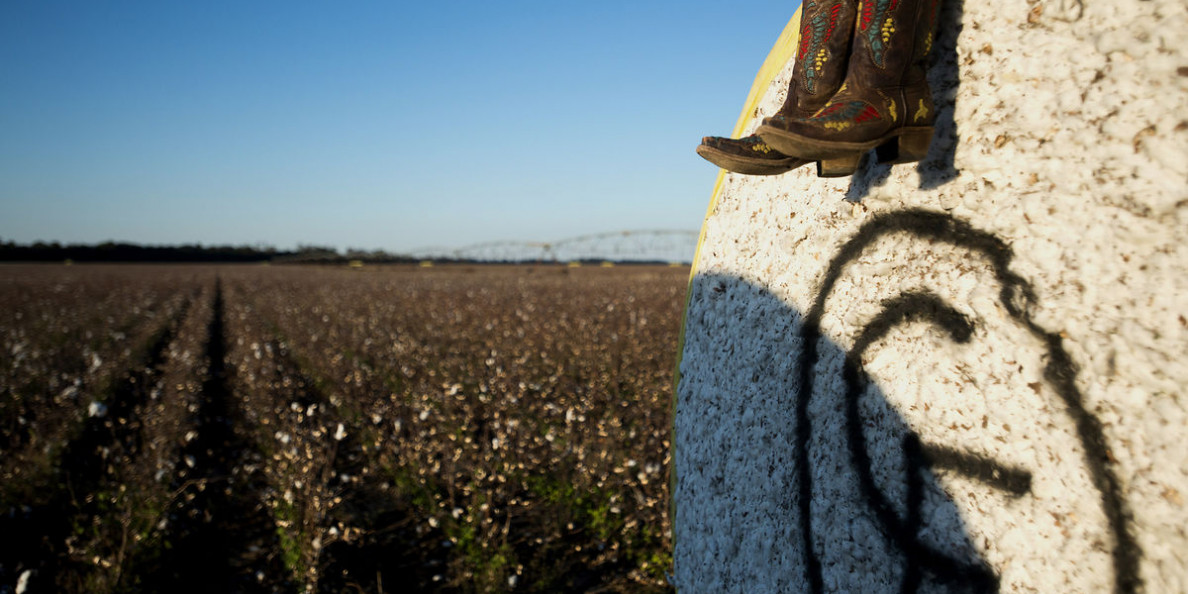August 11, 2023
- U.S. July CPI Rose 3.2% Year-Over-Year
- Final Export Sales Report for the 2022/23 Crop was Released on August 10
- USDA Unexpectedly Cut U.S. Production 2.51 million bales to 13.99 million bales
- Southwest Crop Continues to Deteriorate from Heat Stress
Cotton futures traded sideways this week, holding steady with the anticipated release of the WASDE. Macro headwinds pressured the market much of the week and worrying economic news out of China did not help. On the opposite side, worries of how heat stress has affected crop and continued Reserve Sales out of China helped curb losses early in the week. A strong Export Sales Report helped bump prices up to close out the week on a high note. For the week ending August 10, December futures settled at 86.15 cents per pound, up 145 points from the week prior. Although daily volumes traded this week were lower, total open interest managed to increase 2,503 contracts to 212,259.
Outside Markets
The release of the Consumer Price Index (CPI) on Thursday was the headline in broader markets this week. July CPI rose 3.2% year-over-year, which was slightly weaker than market expectations. The overall neutral report has many analysts expecting an interest rate pause in September. The report helped push major indexes higher to finish the week. In addition to the neutral inflation news, an increase in weekly unemployment claims put pressure on the U.S. Dollar, which helped boost commodity prices in general. Crude oil prices continued to strengthen, and with cotton prices being correlated with oil prices, the increase has helped bolster prices this week.
Export Sales
This week’s Export Sales Report was the final report for the 2022/23 season and also contained the activity for the first few days of the 2023/24 marketing year. The outgoing marketing year ended without any major fireworks. The last week of the 2022/23 season showed a total of 195,800 Upland bales were exported. This was lower than what was needed to meet the export estimate of 12.9 million bales and a total of 2,152,500 Upland bales will be carried to the 2023/24 marketing year. Total accumulated exports for the 2022/23 crop year finished at 11,777,500 bales. The 2023/24 marketing year began August 1. A net total of 277,700 Upland bales were booked for the beginning of the crop year and a total of 129,000 bales were shipped. To no surprise, China was the biggest buyer this week, booking 154,100 bales. China was followed by Pakistan with 132,800 bales, Vietnam with 13,900 bales, and Honduras with 11,900 bales. Net sales of Pima for 2023/24 totaled 900 bales, with no sales reported for the 2022/23 crop year. A small 1,000 bales of the 2023/24 crop were exported. Exports for the last week of 2022/23 totaled 2,100 bales, meaning carryover from the 2022/23 crop totaled 31,400 bales.
WASDE and Crop Production Reports
We do not typically cover action on Friday but held back due to the release of today’s WASDE report. From a purely cotton point of view, the WASDE was this week’s main event. The 2022/23 crop was kept mostly unchanged. Production was kept at 14.47 million bales, consumption stayed at 2.05 million bales, but exports decreased 100,000 bales to 12.8 million bales.
While the Export Sales Report did not contain fireworks, the 2023/24 update to the balance sheet sent the market up. A substantial decrease of 2.51 million bales to production, bringing the total to 13.99 million bales, took the market by surprise. A cut was expected with production, but one of that size was not. Domestic consumption decreased 50,000 bales to 2.15 million bales, and exports decreased 1.25 million bales to 12.5 million bales. The first look at production numbers was released simultaneously with the WASDE. Projected production in Texas is expected to be 4.2 million bales, Oklahoma is expected to have 520,000 bales, and Kansas 250,000 bales.
Globally, the 2022/23 balance sheet showed a rise in consumption of 710,000 bales to bring the total to 110.48. Endings stocks also increased 180,000 bales to 94.13 million bales. The 2023/24 balance sheet brought consumption up 490,000 bales to 116.94 million bales but cut ending stocks by 2.92 million bales to 91.60 million bales.
Weather and Crop Progress
The hot, dry weather continues to put stress on the crop in West Texas, Oklahoma, and Kansas. Although little relief has been found, scattered thunderstorms and spotty rain were reported across many areas. Much more rain and seasonable temperatures will be needed soon to provide relief to the heat stressed crop. Harvest is progressing rapidly across South Texas. Unlike West Texas, the dry weather that is forecast in the coming week will be welcome to ensure harvest continues without interruption. The deterioration of the crop in the Southwest has caused the overall crop in the U.S. to continue to decline. For the week ending August 6, the overall U.S. crop was rated as 6% “Excellent”, 35% as “Good”, 25% as “Fair”, 21% as “Poor”, and 13% as “Very Poor”.
The Week Ahead
With a fresh WASDE in hand, attention will likely shift back to the usual watch points. Although it appears inflation worries are easing, broader economic concerns will continue to be watched as they have been a source of movement for cotton prices lately. Crop progress and condition, weather, and the Export Sales Report will continue to hold their usual importance on the fundamental front.
- Friday at 2:30 p.m. Central – Commitments of Traders
- Monday at 3:00 p.m. Central – Crop Progress and Condition Report
- Thursday at 7:30 a.m. Central – Export Sales Report
- Thursday at 2:30 p.m. Central – Cotton On-Call


